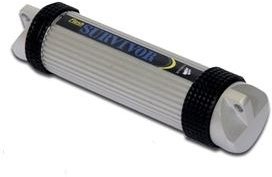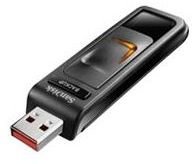Who Invented the USB Flash Drive? How Does a USB Flash Drive Work?
Rise of USB
Developed by a consortium of companies made up of Intel, Compaq, Microsoft, Sony, DEC, IBM, and Northern Telecom, the Universal Serial Bus (USB) was introduced in January 1996. At that time, the USB 1.0 standard was capable of delivering a transfer rate of 12 Mbit/s.
In April of 2000, USB 2.0 was introduced with a transfer rate of 480 Mbit/s. More recently, the USB 3.0 standard reaches transfer rates of 4.8 Gbit/s. These faster rates allow devices such as printers, mice, and keyboards to connect to computers easily and inexpensively.
A History of USB Flash Drives

Although USB technology was developed in 1996, it wasn’t until 2000 that IBM sold its first DiskOnKey and Trek Technology sold its first ThumbDrive and the world was introduced to the first USB flash drives.
Not surprisingly, the introduction of flash drives brought with it several important lawsuits centering mainly on the potential that USB flash drives represented rather than what companies and individuals had actually done with them.
Today’s USB flash drives use USB 2.0 technology making portable storage that much more convenient due to its 40-times speed increase over the original USB 1.0 standard. Available in sizes up to 64GB with larger drives on the horizon, some people have found ways to install entire operating systems such as Linux and Windows onto these portable storage devices.
How USB Flash Drives Work

Unlike internal and external hard drives, USB flash drives use solid-state technology. Solid state essentially means that the data storage and retrieval on USB flash drives is achieved without moving parts, similar to computer RAM. However, unlike computer RAM, the memory on a USB flash drive is not volatile; the data is not lost when power is cut to the device.
A USB flash drive is made up of three major components. The housing protects the internal components from dirt, debris, and accidental electric charges such as static electricity.
An internal printed circuit board is where the memory chip is connected to the USB drive. These solid-state memory chips can be as small as a few megabytes to as large as 64GB or beyond. It won’t be long before we see 128GB and even 256GB USB flash drives. However, there have been attempts to fool consumers into thinking these devices already exist.
The third component is the USB connector itself. Distinctly flat in appearance, the USB connector is capable of delivering both data transfers and power to the USB flash drive eliminating the need for external power.
Although all USB flash drives have these three components in common, they come in a variety of shapes and sizes for different applications. Some are made for rugged use while others are built entirely for portability. Regardless of the external design, all USB flash drives share these three components.
Conclusion
Although introduced in 1996, the USB wasn’t commercially used in flash drives until 2000. Using solid-state technology, flash drives have no internal moving parts but also don’t contain volatile memory. With storage capacities up to 64GB and beyond, USB flash drives are prized for portability and short to medium-term storage solutions.
